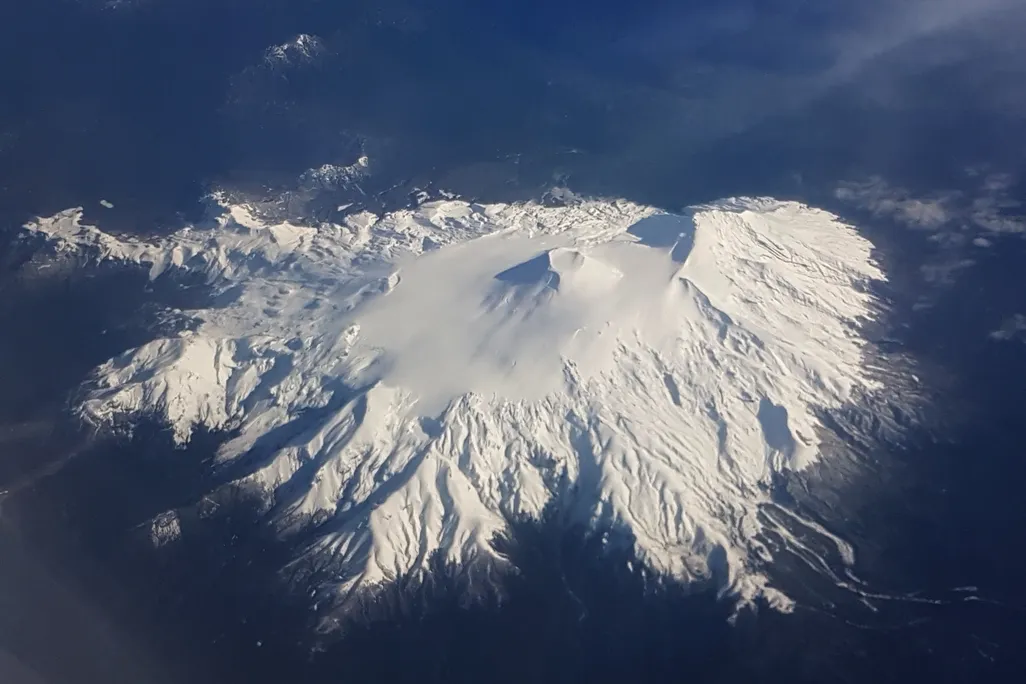Melting Glaciers Will Lead to More Volcanic Eruptions, Study Suggests. Now, All Eyes Are On Antarctica
New research from the Chilean Patagonia has identified a link between glacial retreat and underground volcanic activity

Since the new millennium, the world’s glaciers have shed 5 percent of their collective mass, a loss with significant impacts on both global and regional scales.
When glaciers melt, sea levels rise, avalanches and landslides are more likely to occur, and long-term freshwater access is thrown into question.
Now, a new study adds an additional—and explosive—consequence to the list of changes: melting glaciers are likely to make volcanic eruptions more frequent and severe.
Quick fact: Proximity of volcanoes to glaciers
- According to this 2020 study, 245 of the world's active volcanoes are located within three miles of ice.
The study’s authors, representing the University of Wisconsin-Madison, Dickinson College and the University of La Frontera, presented their findings this week at an international geochemistry conference in Prague. As glaciers retreat, they said, the massive weight of ice gradually lifts off of tectonic plates, alleviating pressure on underground magma chambers and making eruptions more likely.
“When you take the load off, it’s just like opening a Coca-Cola bottle or a champagne bottle,” Brad Singer, a geoscientist at the University of Wisconsin-Madison, told Bob Berwyn of Inside Climate News. “It’s under pressure, and the dissolved gasses in the melt come out as bubbles.”/https://tf-cmsv2-smithsonianmag-media.s3.amazonaws.com/filer_public/60/bf/60bf9566-d6e7-474d-8f64-e6151e7353c9/gettyimages-2167191528.jpg)
Look no further than Iceland, the scientists say, to understand how these geological processes can drastically change a landscape. Increased volcanic activity on the island has been linked to melting ice caps and glacial retreat during the end of the last Ice Age, some 10,000 years ago. In the aftermath of these changes, the country’s volcanoes have erupted between 30 and 50 times more frequently.
“Glaciers tend to suppress the volume of eruptions from the volcanoes beneath them. But as glaciers retreat due to climate change, our findings suggest these volcanoes go on to erupt more frequently and more explosively,” Pablo Moreno Yaeger, a graduate student at the University of Wisconsin-Madison who presented the research at Goldschmidt Conference, said in a news release.
What has been observed in Iceland has been understudied elsewhere. The team focused their observations on six volcanoes in southern Chile, where the Patagonian Ice Sheet once stretched, to better understand the continental relationship between the weight of glaciers, the pressure they exerted underground and volcanic activity.
/https://tf-cmsv2-smithsonianmag-media.s3.amazonaws.com/filer_public/55/fc/55fc9c1c-000f-4031-ae80-c37157904d51/low-res_photo_3.jpg)
Using argon dating and crystal analysis, the scientists learned that during the peak of the last Ice Age—between 26,000 years and 18,000 years ago—the overwhelming weight of glacial ice on the Earth’s surface caused a massive magma reservoir to form between six miles and 10 miles underground. As the ice gradually retreated, this reservoir released its pressure and formed the Mocho-Choshuenco compound stratovolcano.
Uncovering these historic clues offers insight for the near future. The researchers have turned their attention even farther south, to the West Antarctic Ice Sheet, where more than 100 active volcanoes lay underneath a thick yet vulnerable frozen layer. A 2023 study published in the journal Nature Climate Change forecasts that the sheet’s rapid melting by century’s end is inevitable, even if global carbon emissions are drastically reduced in short order.
If volcanoes begin to erupt in Antarctica as a result of glacial melt, the heat from these reactions will spur a positive feedback loop, further accelerating melting. A bevy of eruptions would also likely affect the global climate, as carbon dioxide and methane are released when ash and lava are spewed into the atmosphere.
/https://tf-cmsv2-smithsonianmag-media.s3.amazonaws.com/filer_public/6d/33/6d331561-d3cf-4f06-a30f-946a7e50a5bd/thwaites_glacier.jpg)
The new study’s researchers also warn that their findings apply to volcano chains globally. According to a 2020 study published in Global and Planetary Change, 245 of the world’s active volcanoes are within three miles of ice.
Researchers from the United Kingdom explored the tenuous balance between fire and ice in a paper published last November in the journal Communications Earth & Environment. After analyzing more than 18,000 glaciers around the world, they found that those located within three miles of an active volcano retreat, on average, 46 percent faster than those positioned farther away. The scientists hypothesized that the rising underground heat melted glaciers’ undersides, thus contributing to their faster flow.
“Other continental regions, like parts of North America, New Zealand and Russia, also now warrant closer scientific attention,” Moreno Yaeger said in a statement./https://tf-cmsv2-smithsonianmag-media.s3.amazonaws.com/accounts/headshot/ChristianThorsberg_Headshot.png)
